UPDATE: My question is the opposite of this one, which it's been suggested might be a duplicate. I want not to use interpolation.
I am using Highcharts 4.1.7. I have a line chart with two time series. One series has a missing (not null, missing) data point.
By default in Highcharts, the line chart joins the points on either side and ignores the missing value. Is there any way to tell Highcharts not to join points where they are missing a value present in the other series?
I know that I can manually insert null values (and the default setting of connectNulls: false will do the rest), but it seems odd that Highcharts would interpolate between missing values by default - it's definitely visually misleading.
Code:
$('#container').highcharts({
xAxis: {
type: 'datetime',
dateTimeLabelFormats: {
month: '%b \'%y'
}
},
series: [{
data: [{ x: 1362096000000, y: 29.9}, { x: 1364774400000, y: 71.5}, { x: 1367366400000, y: 106.4}, { x: 1370001600000, y: 99.9}, { x: 1372636800000, y: 108.4}]
},
{
data: [{ x: 1362096000000, y: 19.9}, { x: 1364774400000, y: 44.5}, { x: 1367366400000, y: 88.4}, { x: 1372636800000, y: 76.4}]
}]
});
JSFiddle here: http://jsfiddle.net/rnshabuf/
Renders like this:
